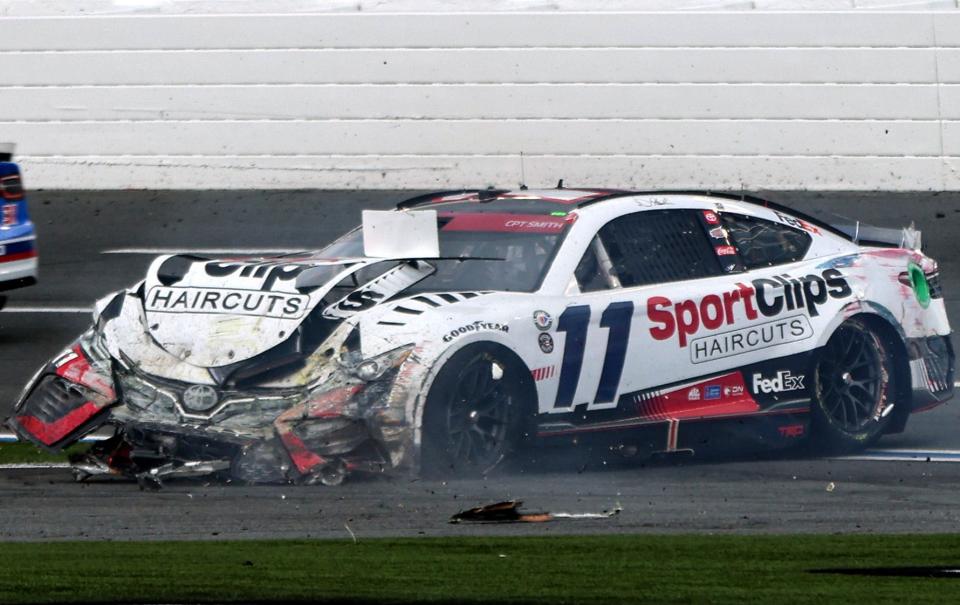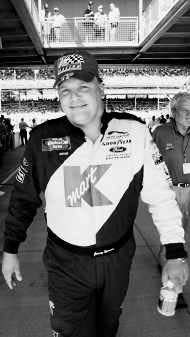Chase Elliott said one thing, the data said another, and everything changes in NASCAR | KEN WILLIS
“Upon further review …” as they say.
On the bright side, at least this isn’t artificial intelligence crowding into our lives and threatening upheaval.
This is actual intelligence, the technical type, and while it most recently led to Chase Elliott’s one-race suspension, it failed to do the same to Austin Cindric, which suggests there’s still some gray areas to whatever our gray matter generates.
Not knowing whether to believe their gut, Denny Hamlin, or their own lyin’ eyes, NASCAR officials went to the data following Chase’s rude retaliation upon Hamlin at Charlotte last Monday.
Trouble began when Hamlin, to the inside of Elliott, got loose coming through Turn 4 and went up the track, squeezing Elliott a bit into the outside wall.
In the blink of an eye, Elliott then clipped Hamlin on his No. 11 car’s right-rear quarter-panel, a move which has been labeled racing’s ultimate no-no, particularly at high speed, because it turns the victim hard to the right and into the outside wall.
THRU THE GEARS: Kyle Busch climbing list of NASCAR legends, Dillon demands suspension and Gragson is 'Counting down the days'
NASCAR POLL: Daniel Suarez, Chase Elliott, Ross Chastain, Kyle Larson ... who's the road course king??

Yes, that’s a “soft wall” — the life-saving SAFER Barrier — but it’s no bean bag.
Denny considered it a blatant affront from Chase, while Chase went to racing’s age-old script when asked to respond.
“The 11 put me in the fence, and once you take the right sides off these things it’s kind of over,” Chase said. “Once you hit the wall in these things, you can’t drive ’em any more.”
He went on to hang a label on the whole ordeal: “Unfortunate circumstances.”
Ah, the ol’ UC. Often followed by another time-tested cover-all: “That’s racin’.”
If any discipline was to be delivered, it would have to be a little frontier justice, which occasionally through the years begat a cycle of incidents that eventually crossed into outright feuds — Allison-Waltrip, Earnhardt-Bodine, Chastain-Everybody.
But here’s something the stock-car forefathers never had to worry about: Data. The black-box info made available to industry insiders, which, by the way, includes Denny Hamlin.
Denny, not long after dusting off his helmet, took to “social” media to show the steering data from Chase’s No. 9 Chevy.
Uh-oh.
Absolute left hook. Cranked the wheel 4X harder left than he did making any corner through the whole day. Bullsh*t move. pic.twitter.com/6DylWjKyVu
— Denny Hamlin (@dennyhamlin) May 29, 2023
The data showed a hard left turn of the steering wheel by Chase, and wouldn’t you know, right at the instant Denny got hooked in the right rear and sent into the wall at high speed.
Kyle Busch soon suggested he tried to get NASCAR to use data six years ago when Joey Logano wrecked him at Vegas. Kevin Harvick brought up Bristol from two years ago, when Chase intentionally (he says) held him up and cost him a win — that furthered along a little doozy of a feud between those two.
Since we’re bringing in the Way Back Machine, any chance we can retroactively attach a data box to the cars of Richard Petty and David Pearson to see what really triggered mayhem on the final lap of the ’76 Daytona 500?
Can we relive, through technology, the best hits from Buckshot Jones-vs-Randy LaJoie, Jack Sprague-vs-Ron Hornaday, Jimmy Spencer-vs-Kurt Busch, and so many others? The technicians’ heads would be spinning for weeks if they got hold of the Sprague-Hornaday read-outs. Trust me, you had to be there.

About now, you might be wondering, what could go wrong?
We’ll see, but this seems different than the use of modern technology in traditional stick-and-ball sports. In football, for instance, the replay official is simply determining whether a goal line was crossed, both feet came down in-bounds, etc.
In racing, the data will tell them what happened mechanically — the wheel was cranked left, the brake was engaged, the throttle was disengaged … whatever. But it can’t measure the human element, the emotional end, the potential for simple physical error.
You’re on the slope of slipperiness when you decide to weigh those factors — or not — into a decision to punish or not.
In fact, after looking at the feed, Austin Cindric’s dumping of Austin Dillon this past Sunday was deemed unintentional.
“One car coming up a little bit and another car going down,” NASCAR’s competition director, Elton Sawyer, said on Sirius/XM’s NASCAR channel.
So maybe that’s racin’ lives on. Let’s hope so.
— Reach Ken Willis at ken.willis@news-jrnl.com
This article originally appeared on The Daytona Beach News-Journal: NASCAR data dooms Chase Elliott's alibi in Denny Hamlin hit

